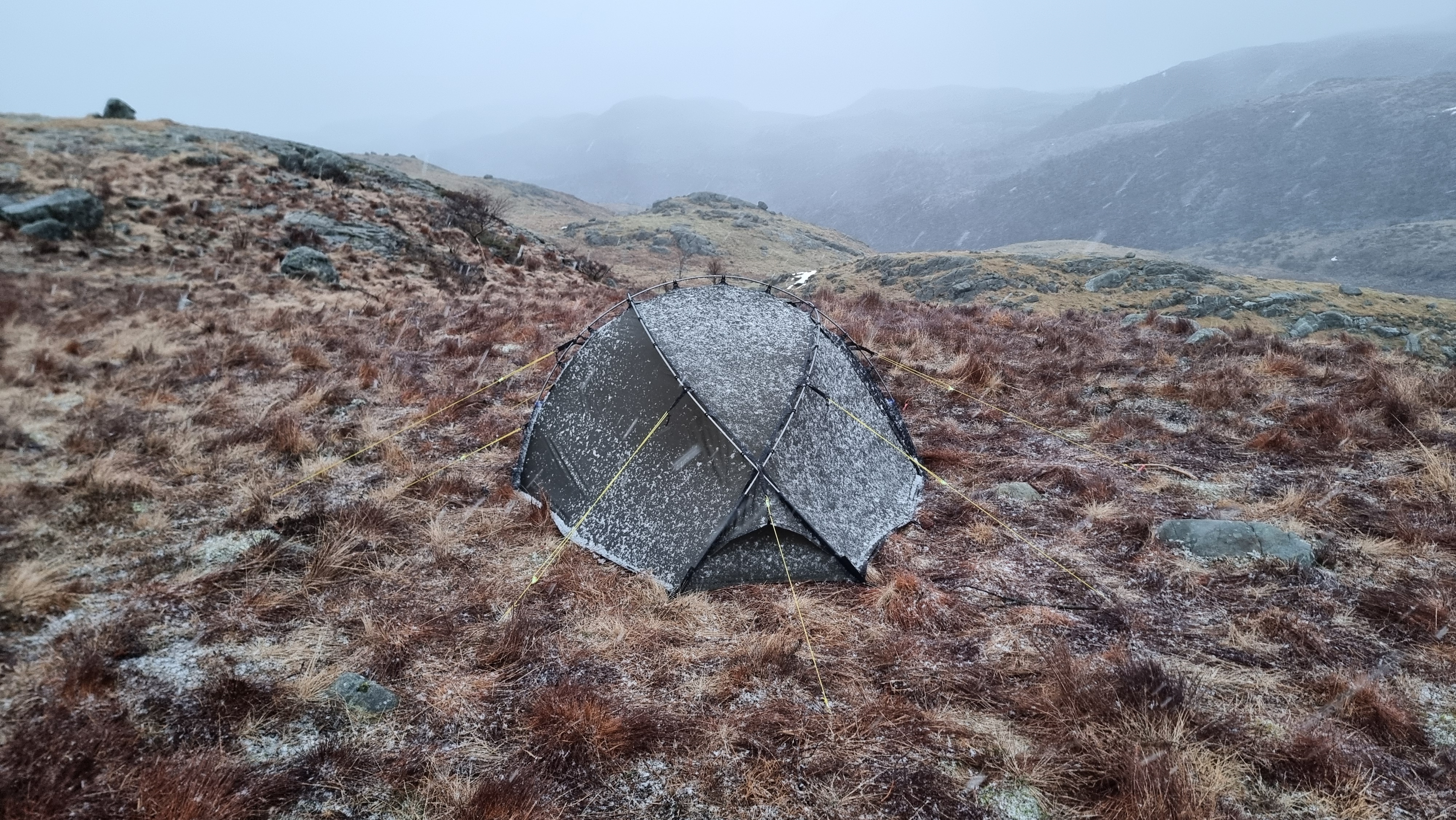Understanding windspeed
Using a tent in high winds, especially in mountainous regions, can be a challenging and potentially dangerous experience. However, with the right equipment and precautions, it can be a rewarding adventure. One crucial piece of gear is a tent that can withstand the forces of strong winds. However, it's crucial to understand that every system, no matter how resilient, has its limits and will eventually reach a breaking point.
At our company, we take pride in offering the tents, which are designed and rigorously tested to endure harsh weather. Our Vern tents, for example, has been tested in a live environment with wind speeds (unsheltered) of at least 20 m/s (approximately 45 mph). This level of wind resistance is achieved through a combination of sturdy materials, aerodynamic design, and robust anchoring systems. And yes. Live environment is something completely different than a wiind tunnel...
While the Vern tents are built to handle winds to at least 20 m/s, we strongly recommend taking additional precautions for wind speeds exceeding this threshold. Specifically, we advise using double-poling which is available for the Vern series, which involves reinforcing the tent structure with additional poles for added stability and strength. But! For a good night sleep. It is always, always highly recommneded to minimize the external forces that are exposed to the tent.
It's important to note that wind forces do not increase proportionally with wind speed. In fact, as wind speed doubles, the force exerted on a tent can increase by a factor of 4 to 5. For example, if a wind speed of 34 mph exerts a force factor of 10 on a tent, a wind speed of 70 mph would subject the tent to a force factor of approximately 40 – a staggering four times greater.

This nonlinear relationship between wind speed and wind force highlights the importance of being aware of the conditions and taking appropriate precautions. Even a seemingly small increase in wind speed can result in a significant escalation of the forces acting on your tent. As seen in the table above.
While our Vern series tents have proven their resilience in harsh conditions, including camping in weather with winds up to 70 mph during winter camping, it's crucial to emphasize that such exposure was minimized by seeking natural protection and lower ground. When camping in high winds, it is always advisable to position your tent in a sheltered area, taking advantage of natural barriers like rock formations or dense vegetation. No tent or even some buldings would survive a direct hit of windspeed at 70 mph.
Safety should be the top priority when camping in challenging environments. By understanding the dynamics of wind forces, utilizing high-quality equipment, and employing proper techniques like double-poling and strategic campsite selection, you can mitigate the risks associated with high winds and enjoy a secure and enjoyable outdoor experience. Take care of yourself. Keep safe. :-)















